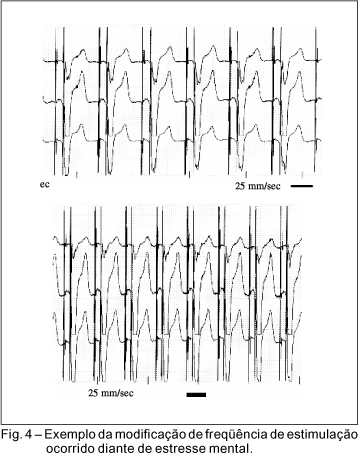INTRODUCTION: The treatment of bradycardias with bicameral pacemakers (PM) with frequency response (DDD,R) has motivated the search of an ideal sensor. We did a late re-evaluation (3 years) the frequency response of those PM with myocardial contractility sensor in closed loop system. MATERIAL AND METHODS: Thirty patients (pts) of the initial study done in 1997, who presented binodal disease and 3-year implantation were evaluated, being 60% male, ages between 17-87 (average = 61). Their heart frequency (HF) was observed through a 24 Holter monitoring and MP frequency histogram on the daily activities, plus 6-minute walk and going up and downstairs tests. Chronic pacing thresholds were determined as well as atrial (A) and ventricular (V) sensitivity, checking them against those obtained in the implantation and immediate post-operative periods. RESULTS: The average threshold in the intra-operative, 30 days and 3 years were as follows: A pacing (0.8, 1.4 and 1.1V) and V (0.5, 1.1 e 1.0V), A sensitivity (2.3, 2.8 e 2.6mV) and V (10.6, 6.3 and 6.3mV). The HF at the 3rd year increased for daily activities (physical and mental) from 33 to 91%, and for physical exercises tests from 21 to 130%, similarly to the results obtained in 30 days (test t student and variation analysis). This contractility sensor kept at the 3rd year the same good results obtained at the 30th day, presenting the following adverse effects: high-energy consumption in 2 pts and difficulty of sensor adjustment in other 2.
Cardiac pacing, artificial; Pacemaker, artificial; Myocardial contraction





